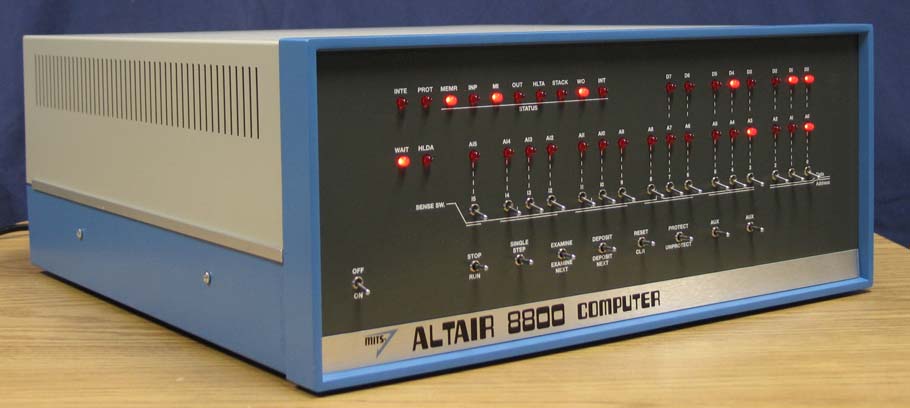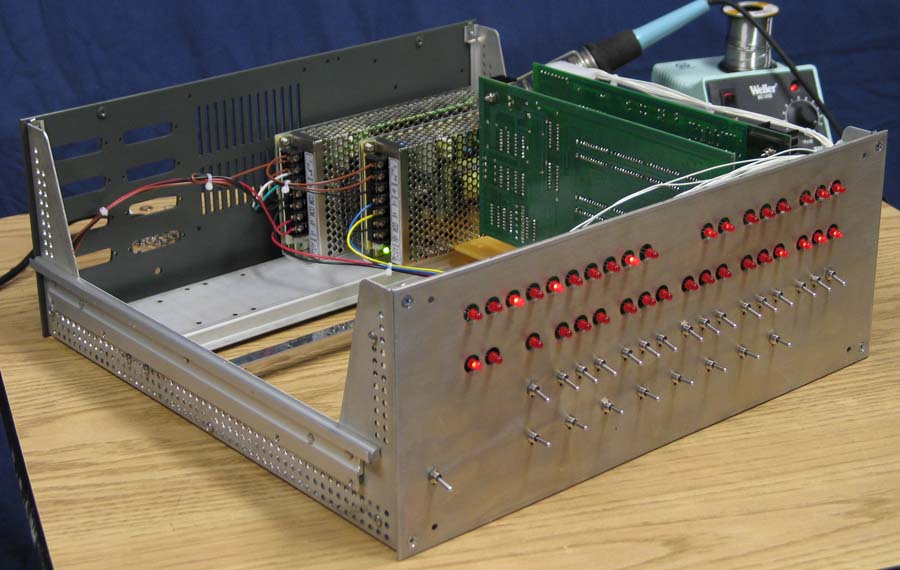Heathkit tried to make a comeback last year but went out of business this year.
http://en.wikipedia.org/wiki/Heathkit
There was just too much overhead in the electronics kit business. The same overhead killed the S-100 bus systems in the late 1970s, and the Apple II bus systems by the late 1980s.
I'll guess that most people who buy a computer today never open it, not even to add memory.
Computing from the Old Days, brought back to life
Moderator: Ras
-
jdart
- Posts: 4411
- Joined: Fri Mar 10, 2006 5:23 am
- Location: http://www.arasanchess.org
Re: Heathkit H89
I loved Heathkits, I was a big electronics hobbyist at the time (also doing a lot of homebrew projects). I'm mostly a software guy now. I still do some custom computer builds, but that is not as challenging or educational as building everything up from the component level.
--Jon
--Jon
-
stegemma

- Posts: 859
- Joined: Mon Aug 10, 2009 10:05 pm
- Location: Italy
- Full name: Stefano Gemma
Re: Computing from the Old Days, brought back to life
Interesting system.. have you never thinked about to build something like a carillon, just to automatically move up and down all the switches in the right sequence?bob wrote:...
To boot the interpreter from tape, you got to flip front panel switches for about 10 minutes to load the binary instructions by hand that would then read in the real loader program from cassette which would then read in the interpreter...
My dream are always been to write a chess program for the ZX81 with 1Kb RAM. I know that this program was already written but still it remains one of my dream. Maybe sometime i can find the time to try...
-
Joost Buijs
- Posts: 1650
- Joined: Thu Jul 16, 2009 10:47 am
- Location: Almere, The Netherlands
Re: Heathkit H89
It was the same here. In 1966 I started with electronics and somewhat later I became interested in amateur radio. Somewhere in the eighties I switched completely to computers and programming. I did a lot of homebrew stuff. At a certain point I even designed and build my own micro computer. Another project I did was a hardware move generator and tree search for Reversi (Othello). Unfortunately this was not very successful because by the time the project was finished it was not faster than what you could do with a (at that time modern) PC.jdart wrote:I loved Heathkits, I was a big electronics hobbyist at the time (also doing a lot of homebrew projects). I'm mostly a software guy now. I still do some custom computer builds, but that is not as challenging or educational as building everything up from the component level.
--Jon
-
sje

- Posts: 4675
- Joined: Mon Mar 13, 2006 7:43 pm
Now up and running
Got it hooked up to a monitor and a keyboard. No cassette drive for storing programs; at present BASIC and other programs are loaded from an SD card.
Are you old enough to remember a boot screen like this?

Are you old enough to remember a boot screen like this?

-
sje

- Posts: 4675
- Joined: Mon Mar 13, 2006 7:43 pm
Also, the near duplicate of the original Altair 8800
There is a kit available with which one may build a near duplicate of the original Altair 8800. See: http://www.altairkit.com/


The price of the base kit is US$1,499 and includes a single 1 KB RAM card. A 4 KB RAM card costs US$135, a two port serial card is $125, and an 8 slot 2 KB PROM board is $125. A loaded, 16 KB system with delivery costs about US$2,600.
Everything is interoperable with original hardware from 1976. The only real difference is the use of a safer, lighter, modern switching power supply.


The price of the base kit is US$1,499 and includes a single 1 KB RAM card. A 4 KB RAM card costs US$135, a two port serial card is $125, and an 8 slot 2 KB PROM board is $125. A loaded, 16 KB system with delivery costs about US$2,600.
Everything is interoperable with original hardware from 1976. The only real difference is the use of a safer, lighter, modern switching power supply.
-
sje

- Posts: 4675
- Joined: Mon Mar 13, 2006 7:43 pm
Re: Also, the near duplicate of the original Altair 8800
For that extra level of retro-cool, a chess program for the Altair should be connected to a chess server using a dial-up modem with a speed no faster than 300 cps.
Using from 16 to 32 KB of RAM, a chess program for a 2 MHz 8080 machine (RAM speed 1 MHz, single byte) might reach 1200 elo on a good day.
It would be interesting for an ICS to facilitate micro-charging where a player would pay a a few pennies for each game against a rare or unusual computer opponent and have this money gated to the program's author or authors. This could spur the development and deployment of new programs and help defray the cost of hardware and connection.
Using from 16 to 32 KB of RAM, a chess program for a 2 MHz 8080 machine (RAM speed 1 MHz, single byte) might reach 1200 elo on a good day.
It would be interesting for an ICS to facilitate micro-charging where a player would pay a a few pennies for each game against a rare or unusual computer opponent and have this money gated to the program's author or authors. This could spur the development and deployment of new programs and help defray the cost of hardware and connection.
-
mike_bike_kite
- Posts: 98
- Joined: Tue Jul 26, 2011 12:18 am
- Location: London
Re: Heathkit H89
My first computer was an acorn system 1 (6502 and 1k memory + 128 bytes free in an io chip). Like most of these computers you programmed it in machine code instructions (ie hand assembly) on a hex keypad. Programs could be loaded via tape with the first program being a better tape loader as the original one sucked. I wrote a reasonable othello program. I don't have it now (shame) but I do still have my Acorn atom.
There is a great coffee table book ( digital retro ) which describes all these early machines - highly recommended.
There is a great coffee table book ( digital retro ) which describes all these early machines - highly recommended.
-
sje

- Posts: 4675
- Joined: Mon Mar 13, 2006 7:43 pm
Re: Heathkit H89
Sounds like the fabled KIM-1. http://en.wikipedia.org/wiki/Kim-1mike_bike_kite wrote:My first computer was an acorn system 1 (6502 and 1k memory + 128 bytes free in an io chip). Like most of these computers you programmed it in machine code instructions (ie hand assembly) on a hex keypad.
I have the Briel Computers version, the MicroKIM, which has a big 5 KB of RAM.